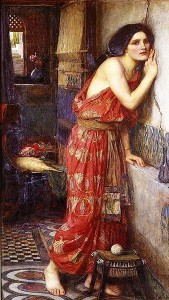Date: 1909
Medium: Oil on canvas
Size: 97 x 60 cm
Location:
Waterhouse’s Thisbe was the first of her female tree paintings to be exhibited publicly. It was a response to male gazes and was first exhibited in spring 1909. It was a huge success, and Rose Sketchley, a leading art critic, wrote the most insightful analysis of Waterhouse’s paintings in The Art Journal’s Christmas issue. Thisbe is the result of Waterhouse’s collaboration with her friend and former student, Edward Baxter.
Waterhouse’s choice of colors was a result of his passion for female artistry. The embroidery on Thisbe’s gown was based on the ancient Greek goddess Persephone. In addition to this, Waterhouse was inspired by mythology, and he incorporated elements of that culture into his paintings. The color scheme of Thisbe’s dress is a mash-up of Egyptian, Arabic, Persian, and Islamic influences.
The colors in Waterhouse’s painting of Thisbe are from her favorite lakes. The gown draws the eye upward to Thisbe’s face, which is framed by a triangle of her arm and head. As the viewer watches, the triangle’s refractions pick up the colors in the dress and she becomes increasingly alluring and alarming. The painting shows a range of emotions, from jealousy and fear to joy and satisfaction.
In her luminous, dreamlike face, Thisbe draws the viewer’s attention to the garden beyond. The woman’s dress, meanwhile, has an exquisite symmetry that echoes her torso. Unlike other women, she is unrecognizable, but her discoloration suggests her identity as a model. Thisbe’s lone figure is so well-grounded that she’s almost lost herself.
Although this painting is an interpretation of the ancient myth, the exact model of Thisbe’s dress is unknown. Thisbe’s model appears in Penelope and the Suitors (1893) and Ophelia, but she is never identified. The discoloration of her dress is a symbol of her femininity. The woman is listening to Pyramus through the crack in the wall. She is holding a needle and is weaving a cloth.
Despite the sombre mood of the book, the story of Thisbe is also a witty one. It is based on the story of Ovid’s Metamorphoses, which was first written in the late 1300s. The novel, “Thisbe” is a literary adaptation of the myth of Ovid’s tale of The Beloved. It is a classic example of modern love.

